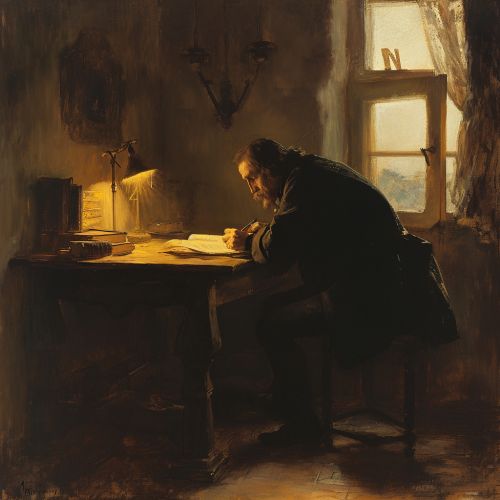Elegy
Origins and History
The term elegy originates from the Greek word 'elegeia', which translates to 'lament'. The concept of the elegy has been prevalent in literature since the ancient times, with the Greeks and Romans being the first to formalize its structure and themes. The elegy was traditionally written in couplets, and was used to express grief and mourning, often over the death of a loved one.


In the Roman era, the elegy evolved to encompass a broader range of themes, including love and politics. The Roman poets, such as Ovid and Propertius, were known for their elegiac couplets, which combined a line of hexameter followed by a line of pentameter. This form was later adopted by English poets in the 16th century, who began to use the elegy to explore themes of love and beauty, as well as death and loss.
Structure and Form
The structure of an elegy can vary greatly depending on the era and the poet. However, there are certain common elements that are often found in elegies. These include the expression of grief, the admiration of the deceased, and a consolation or solace at the end.
In terms of form, the elegy is often written in quatrains with an ABAB rhyme scheme, although this is not a strict rule. The language used in an elegy is often elevated and formal, reflecting the serious and somber themes of the poem.
Themes and Motifs
The primary theme of an elegy is mourning and grief. The poet often expresses a deep sense of loss and sorrow over the death of a loved one. However, an elegy can also mourn the loss of a way of life, a moment in time, or a cherished idea.
In addition to grief, other common themes in elegies include the passage of time, the transient nature of life, and the inevitability of death. The poet may also reflect on the virtues and achievements of the deceased, and express a longing for their return.
Notable Elegies in Literature
There are numerous notable elegies in literature that have stood the test of time. One of the most famous is "Elegy Written in a Country Churchyard" by Thomas Gray, which mourns the death of the common man and reflects on the inevitability of death for all.
Another notable elegy is "In Memoriam A.H.H." by Alfred Lord Tennyson, which was written over a period of 17 years following the death of Tennyson's close friend. This poem explores themes of grief, loss, and the search for hope in the face of despair.
Modern Interpretations
In the modern era, the elegy has continued to evolve and adapt to reflect contemporary themes and issues. Modern elegies often challenge traditional conventions and explore themes such as war, social injustice, and environmental destruction.
Despite these changes, the core elements of the elegy remain the same – it is a poem of mourning that seeks to express grief and find solace in the face of loss.
